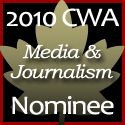
A CULTURE OF DEFIANCE: History of the Reform-Conservative Party of Canada
"To watch the courageous Afghan freedom fighters battle modern arsenals with simple hand-held weapons is an inspiration to those who love freedom. Their courage teaches us a great lesson—that there are things in this world worth defending. To the Afghan people, I say on behalf of all Americans that we admire your heroism, your devotion to freedom, and your relentless struggle against your oppressors." Ronald Reagan (1)
When Ronald Reagan first came to power, he had no intention of promoting peace, other than through the Orwellian "Peace Through Strength" initiative. He had been a member of the revived Committee on the Present Danger, whose mandate was to encourage an aggressive foreign policy, to assume control of the world's resources, especially oil. As a result the defense budget was increased to unheard of levels in an effort to build up arms.
When the Reagan administration took office in January 1981, it had little interest in nuclear arms controls or disarmament. To staff its national security posts, the administration drew heavily upon members of the Committee on the Present Danger (CPD), a hawkish group that had led the opposition to Carter-era nuclear arms control ventures. By November, 32 members of the CPD--including Ronald Reagan himself--had joined the administration. CPD member Richard Perle, the new assistant secretary of defense, told the press: "That we and the Russians could compose our differences, reduce them to treaty constraints ... and then rely on compliance to produce a safer world--I don’t agree with any of that." Indeed, as Reagan recalled, "there were some people in the Pentagon* who thought in terms of fighting and winning a nuclear war."Reagan’s personal qualms about nuclear weapons were offset by his virulent anticommunism and the hawkish military posture it entailed. (2)Most members of the CPD were neoconservative followers of Leo Strauss, but they also had the backing of the American Enterprise Institute, whose members include Newt Gingrich, Paul Wolfowitz, Irving Kristol, Michael Novak, Richard Perle and David Frum. (who has since been fired)
And after 9/11, whether you believe it was a conspiracy or not, it definitely provided a very large window of opportunity.
The new Pearl Harbor arrived at 8:46 A.M. on the morning of September 11, 2001, less than eight full months into the Bush presidency .... Bush's first-day response to he attack appeared wobbly but the next few weeks were arguably the strongest of his presidency, highlighted by a well-received speech to Congress and a military move against Afghanistan that was supported by leaders of both parties and most Americans.Sounded good to some, but why were they bombed in the first place?
But behind the scenes, Bush and some of the PNAC alums immediately saw an opening for also ousting Saddam, strengthening America's presence in the world's main oil-producing region. "Judge whether good enough [to] hit S.H. [Saddam Hussein] at the same time," Secretary Rumsfeld scribbled on a pad while the Pentagon was still on fire. "Not only UBL [Osama, or Usama, bin Laden]. Go massive. Sweep it all up. Things related and not." By mid-2002, the push for invading Iraq, one of the things not related, was under way, and it became clear how much America and the world had changed. While Reagan had declared publicly that killing civilians in a military response to terrorism was "terrorism itself," U.S. officials spoke in 2002 and into 2003 of a new doctrine of "shock and awe," massive bombing aimed at scaring an enemy population into a speedy surrender. (3)
In his book Lawless World, Philippe Sands, a law professor at University College London, describes the actions of the Bush administration as mounting to "a full-scale assault, a war on law."' This rejection of the rule of law and the global rules created following the Second World War has freed up a boisterous crowd of neoconservatives operating within the U.S. administration to unabashedly pursue policies aimed at enhancing America's global dominance. The administration's plans, the Wall Street Journal noted in March 2005, envision "a military that is far more proactive, focused on changing the world instead of just responding to conflicts" (italics added).' The distinguished U.S. journalist Mary McGrory captured this aggressive U.S. behaviour colourfully in a column in the Washington Post when she described America as the "SUV of nations. It hogs the road and guzzles the gas and periodically has to run over something—such as another country—to get to its Middle Eastern filling station."' (4)David Frum and the Axis of Evil
While Ronald Reagan brought on members of the Committee on the Present Danger to direct his foreign policy, George Bush recruited directly from the American Enterprise Institute, including the Canadian David Frum, to act as speech writer. He has been credited with creating the term "Axis of Evil", but according to Frum the original speech read "Axis of Hate." With that speech, Frum was hoping to invoke the sentiments of Reagan's "Evil Empire' and FDR's justifications for going to war.
When Bush delivered his first post-9/11 State of the Union address, he stunned many watching by describing Iraq, Iran, and North Korea as an "axis of evil." Critics immediately questioned the remark, noting that not only did it seem overly aggressive but there was no evidence that the nations were working in concert, as was the case with the original "Axis" powers of Germany, Italy, and Japan, which had signed a nonaggression pact before World War II. (Iran and Iraq, in contrast, had fought a protracted war against each other in the 1980s.)But Frum went beyond simple aggressive speech writing to launching a media campaign, along with Richard Perle, to demonize those he erroneously brought into his "Axis of Hate." Or as Gary Kamiya, in a review of their book, An End to Evil, put it: "Undaunted by the Iraq debacle, uber-hawks David Frum and Richard Perle air their fevered wet dream of a national-security superstate that slaps down uppity Muslims, bombs North Korea, slices and dices civil liberties and scatters the Palestinians like birdseed."(5)
Delaware Democrat Joe Biden, who was chairman of the Senate Foreign Relations Committee at the time, said that America's allies were confused by the resident's "axis of evil" remark, and so was he. "Was it meant to stake out a general notion that we know these guys are bad guys but not the only bad guys? NOr was it meant to be an all-inclusive list? Or was it ... a rhetorical connection between Roosevelt and Reagan—'axis' and 'evil'?" The short answer was, yes.
White House speechwriter David Frum, who authored that section of the speech, said he'd been reading up on Franklin Roosevelt's response to Pearl Harbor, in part because he wanted to learn how FDR had convinced the nation to enthusiastically support the war against Germany when it had been Japan that attacked the United States. He believed that the three nations made up what he called an "axis of hate," and he claimed Bush himself changed it to "evil." (2)
Frum is a member of the Civitas Society, that helps to direct Harper's foreign policy, and a close associate of Jason Kenney's.
From Civitas: (You'll recognize most of the names because they are all tied to the Reform/Alliance/ Conservative Party
Frum is the son-in-law of the controversial Peter Worthington and long time associate of Conrad Black. His sister Linda was given a patronage senate appointment by Stephen Harper.Founding President: William Gairdner
Other Past Presidents: Tom Flanagan, William Robson, and Lorne Gunter
Founding Directors: Janet Ajzenstat, Ted Byfield, Michel Coren, Jacques Dufresne, Tom Flanagan, David Frum, William Gairdner, Jason Kenney, Gwen Landolt, Ezra Levant, Tom Long, Mark Magner, William Robson, David E. Somerville, Michael Walker
Things in Afghanistan Now Worse Than Ever
With the leaked documents related to the War in Afghanistan, several important things have been revealed.
The most pertinent point for Canadians is that the situation in Afghanistan today is far grimmer than painted in the leaked papers. Obama’s military surge of 30,000 additional troops has not stopped the Taliban from controlling more territory. They are using more roadside bombs and hitting more NATO convoys and bases, even in Kabul. They are organizing more suicide bombing missions and assassinations.I never supported the war in the first place. The Taliban government wanted to negotiate with the Bush Administration, and agreed to turn over Bin Laden if they had evidence that he was behind 9/11, but Bush turned them down flat. He wanted a war.
The NATO offensive in Marjah also failed to root the Taliban out of that key district in opium-producing Helmand province. The area remains ungovernable, “a bleeding ulcer,” as the dear departed Gen. Stanley McChrystal called it. The much-touted offensive in Kandahar, designed to bring the entire Taliban-dominated south under NATO/Afghan control, was set for spring, then June, then July. It won’t begin this month, either, as the fasting month of Ramadan starts mid-August. It may not begin until October, if it all, the locals having revolted against the prospect of another American-led war. So much for the Afghans wanting us to liberate them from the Taliban, whom many now consider the lesser of two evils. (6)
In fact, there was also an opportunity to create an allegiance with Iran.
What the world didn't know—but was reported four years later in the American Prospect—was that a back channel of cooperation to remove the Taliban in Afghanistan and deal with al-Qaeda, which Tehran saw as a threat, had secretly opened between the United States and Iran, and Bush's efforts to sound Reaganesque all but destroyed these links. (A second push for accommodation by Iran did come around the time of the Iraq invasion, but it was also rebuffed.) Rather than encourage and work with moderates in Tehran, the overt U.S. hostility was greeted with the election of hard-liner Mahmoud Ahmadinejad as president and escalating tensions over its nuclear program. (2)We are now in a situation where we can't realistically pull out of Afghanistan, even if we wanted to. Harper has simply set a date for retreat, without any peace initiative He wants to "cut and run", meaning that all those lives and all that money was for nothing.
We need to resume our Peacekeeping role, while we rebuild, not simply hand everything over to the private sector as the Harper government proposes.
What a tragic waste
Footnotes:
*Including Dick Cheney and Donald Rumsfeld
Sources:
1. Message on the Observance of Afghanistan Day, Ronald Reagan, From the Oval Office, March 21, 1983
2. Reagan and Nuclear Disarmament: How the Nuclear Freeze movement forced Reagan to make progress on arms control, By Lawrence S. Wittner, Boston Review, April/May 2000
3. Tear Down This Myth: The Right-Wing Distortion of the Reagan Legacy, By Will Bunch, Free Press, ISBN: 978-1-4165-9762-9 5, Pg. 178-179
4. HOLDING THE BULLY'S COAT: Canada and the U.S. Empire, By Linda McQuaig, Doubleday Canada, ISBN 978-0-385-66012-9, Pg. 1-2
5. "An End to Evil" by David Frum and Richard Perle, By Gary Kamiya, January 30, 2004
6. Afghanistan: It’s even worse than you thought, By Haroon Siddiqui, Toronto Star, August 1, 2010



No comments:
Post a Comment